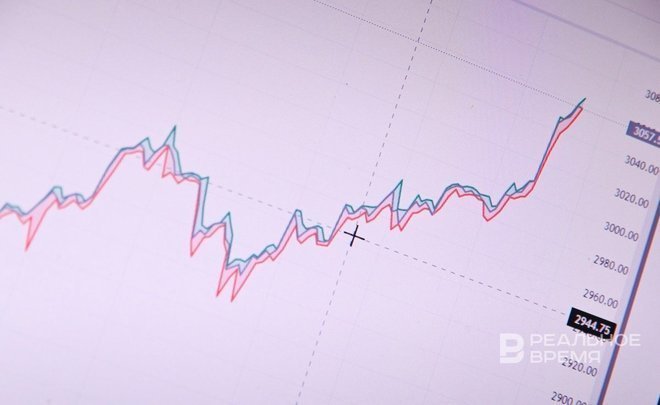‘The ruble became a captive of the refusal of settlement in ‘unfriendly currencies’’

The Russian ruble fails to strengthen its positions against dollar. The next escalation of the Israeli-Palestinian conflict just exacerbated the situation. And this happened despite the growth in global hydrocarbon prices. On Monday, 9 October, the dollar updated its record high since March 2023 during the trading session at Moscow Exchange reaching 102.26 rubles. By the end of the day, the Russian currency managed to bounce back — the rate totalled 99.3 rubles per dollar, which is even better than the result on Friday, 6 October. Then, the trading session closed at 100.41 rubles for the American currency. However, on Tuesday, 10 October, the ruble fell again. At the start of the session, the rate amounted to 100,14 rubles per dollar. At some moment (10.40 Moscow time), the dollar cost 100.68 rubles.
Experts surveyed by Realnoe Vremya explain the ruble’s fall was long as a result of the refusal of settlement in “unfriendly” currencies and there is no belief that high global oil prices will provide it with support.
“World oil prices and a notable rise in Russian Bank’s key rate to 13% a year haven’t yet provided sustainable support for the Russian currency. Just local periods of ruble appreciation are seen in the domestic currency market but they don’t lead to a mid-term weakening trend,” experts say.
War, oil and falling ruble
The Russian currency decreased against the Chinese. A day earlier, a yuan cost over 14 rubles at the exchange, which hadn’t happened since 30 March 2022. However, the Turkish lira also set a historical anti-record by surpassing 28 liras per dollar at some point.

Secondly, the appreciation of the Chinese currency against the Russian is backed by the yuan rate’s general strengthening around the world after Chinese exchanges opened after long holidays, he says. According to Potavin, if there are local corrections in the CNY/RUB rate, significant measures taken by the Bank of Russia and the Ministry of Finance to strengthen the ruble will be local.

Stock market expert of BCS World of Investments Mikhail Zeltsev is more optimistic.

As Zeltser stressed, the currency fluctuation on 9 October was synchronised, while the yuan dynamics weren’t different from the dollar, euro, Hong Kong currency, and this was followed by huge correction by 4%: “Compared to high yuan turnover at the exchange, this is an effect of pent-up buy and sell orders after weeks-long holidays in the PRC and the resumption of settlement and trading of currency pairs at Moscow Exchange.”
Now the stock market forecasts that the expectations boil down to the stabilisation of the ruble rate, and if there is a lot of uncertainty in the short term, in the mid term, we expect the dollar to near 90 than be over 100 by the end of the year. The lira will sooner or later stop its collapse against the dollar, and during the correction stage it can even temporarily approach 25 with being at 28 now: the question is only about what level weakening will start there.
“Pending” oil

However, things aren’t that obvious.
“Amid the events in Israel, oil went once 3.5% up (Editor’s note: on Monday by 7.45 am Moscow time, the price for December Brent futures at London’s ICE demonstrated a 3.57% growth, to $87.6 barrels, 3.8% rise for November futures at WTI, to $85.94 per barrel) — the markets were nervous because of military actions in a big oil region. At this moment, Israel’s militaries took the situation in borderline cities under control, which already started to reduce the level of risks and the strained situation. At the moment, the escalation of this conflict doesn’t carry any obvious risks to oil supplies. Infrastructure hasn’t been damaged either. But the market considers any military actions in a big oil producing region as higher risks to suspend supplies in the case the conflict goes beyond the territory of Israel and new sides are involved in the military actions,” said Lukicheva.

As Finam’s expert notes, there developing an ambiguous situation with oil supplies from Iran too.
“Due to the USA’s softer sanctions pressure on Iran, oil exports from this country have been actively growing since May 2023. According to Kpler, the supplies grew from 1.35 million barrels a day in May to 1.79 million barrels a day in August, which is the highest indicator since November 2019. Since the agreement of OPEC+ on Iran doesn’t apply, the appearance of these additional amounts to the market seriously reduced the efficiency of OPEC+. Even though Iran denies its involvement in HAMAS attacks on Israel, the attitude of the USA to the situation can change. Around 500,000 barrels of oil a day turned out to be at risk of leaving the market, which can support the market’s return to high prices,” concludes Lukicheva.